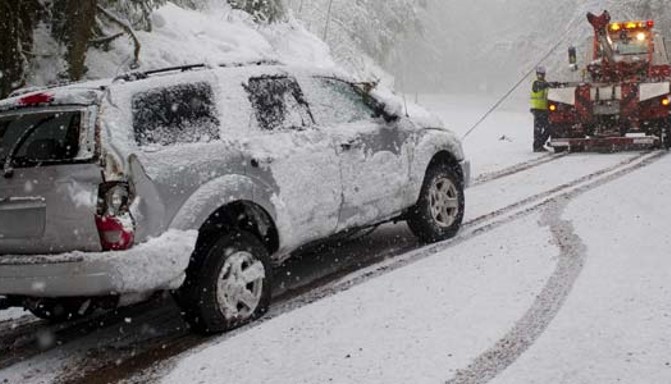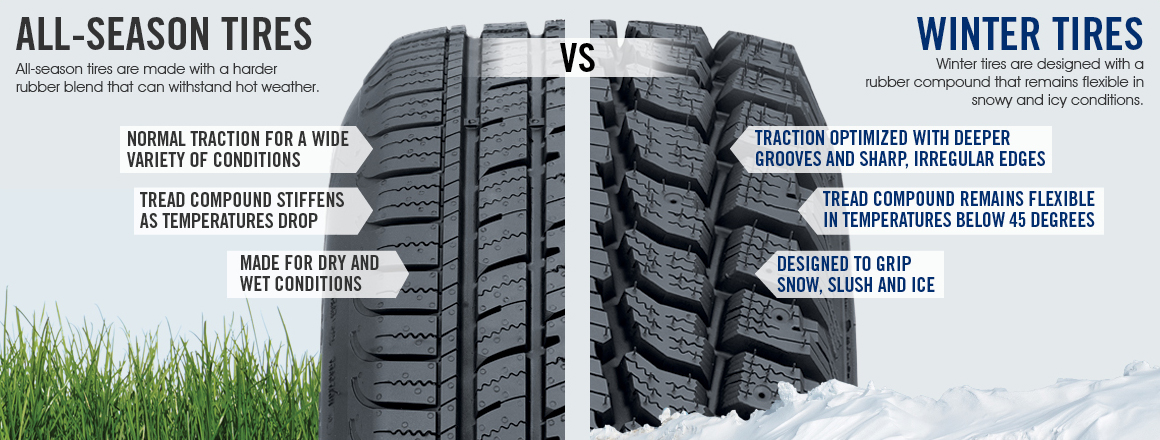Do I Need Snow Tires if I Have AWD?
Content Provided by Les Schwab Tire Center.
Parker | Castle Rock
View original article here.

You can probably safely drive your AWD (all-wheel-drive) with all-season tires in light or moderate snow. But it’s a common misperception that AWDs will drive like tanks in slick conditions.
It’s recommended that you have either winter tires or snow chains on your AWD if you’re driving in a blizzard or icy conditions. Traveling with summer or worn all-season tires on any vehicle in winter is a safety risk. Even a 4WD (four-wheel-drive) will slip and slide on snowy roads if its tires don’t have enough tread.
What AWD Does Really Well in Snow
AWD is great at getting your car moving from a dead stop and accelerating smoothly in a straight line when the pavement is slippery. It’s able to do this because it sends more power to whichever wheels are getting the most traction and less power to the spinning wheels.
But if you don’t have enough traction in the first place, the AWD system can’t compensate. If none of the four tires has enough grip, you’re in trouble.
This is why an AWD equipped with all-season tires might not deliver safe braking and sharp cornering in significant snow or on ice. In fact, some independent testing shows that a front-wheel-drive (FWD) mounted with winter tires will have shorter stopping distance and better cornering than an AWD with all-season tires.
How Winter Tires Provide Better Traction
To be clear, what some people call snow tires are, in fact, winter tires built for better road grip in ALL winter conditions — rain, ice, snow and slush.
Winter tires are made with specialized rubber that stays softer during cold temperatures. They’re designed with tread features like bigger grooves, biting edges, sipes, optional studs and variations in the block shapes for improved gripping even in subzero temperatures.

All-season and summer tires are made with a different rubber compound so they will maintain their shape even on hot pavement. They don’t have as many jagged surfaces and have fewer or shallower channels for ejecting water or snow.
Are Winter Tires Worth it for AWD Vehicles?
AWD is helpful when you’re starting to move or accelerating on slick roads, but not so much when you’re cornering or stopping. It’s not a substitute for having winter tires.
If you’re only visiting snowy areas once or twice a year, you may be fine driving an AWD with all-season tires in good condition. Just be sure to carry tire chains.
If it’s frigid where you live or you’re traveling in more than light snow every month, then buying a set of winter tires for your AWD will deliver the road grip you need for most winter weather conditions. Of course, you may also need a set of good chains for the worst weather.

